Description
Roland is a brand that has been synonymous with electronic instruments for over four decades. Their BK series of keyboards is designed to cater to a wide range of musicians, from hobbyists to professionals. One of the most popular models in the BK series is the Roland BK-5 keyboard.
The BK-5 is a versatile keyboard that offers a wide range of sounds and styles. It has a total of 1176 sounds, including a variety of pianos, organs, strings, brass, and more. The sounds are all high-quality, and many of them are derived from Roland’s flagship instruments. Additionally, the BK-5 has 305 different styles, making it easy to find the perfect accompaniment for your performance.
One of the standout features of the BK-5 is its automatic accompaniment function. With just a few simple button presses, you can have a full band backing up your performance. The accompaniment is customizable, so you can change the tempo, key, and style to suit your needs. This feature is especially useful for solo performers who want to add some depth to their performances.
The BK-5 also has a variety of connectivity options. It has a USB port, allowing you to connect it to a computer for recording or playback. It also has an audio input and output, making it easy to connect to a PA system or amplifier. Additionally, it has a MIDI input and output, allowing you to use it as a controller for other MIDI devices.
One of the drawbacks of the BK-5 is its relatively small display screen. While it’s not a major issue, those who prefer a larger display might find it to be a bit of a hindrance. However, this is a minor point, and overall the BK-5 is an excellent keyboard that offers a wide range of features and sounds.
In conclusion, the Roland BK-5 keyboard is a fantastic instrument for musicians of all levels. Its wide range of sounds and styles, automatic accompaniment function, and connectivity options make it a versatile and practical choice for live performances, recording, and practice. If you’re in the market for a new keyboard, the BK-5 is definitely worth considering.
Roland BK-5 properties
| Product name | BK-5 |
| Brand | Roland |
| Type | Keyboard Instruments |
| Keyboard Instrument | Keyboard |
| Rotary Controls | Yes |

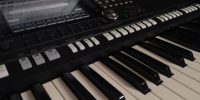
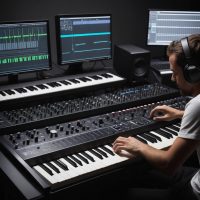
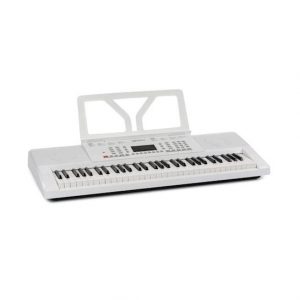
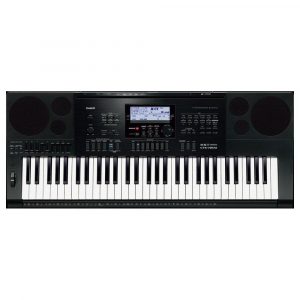
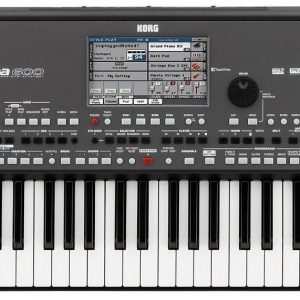
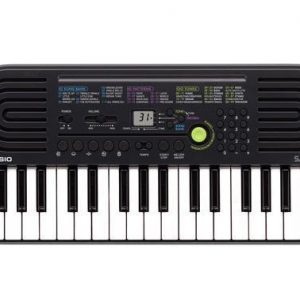
Sniper –
I believe that this instrument can be easily compared to the Roland E-80. I have had it since February 2012 as one of the first ones in the US right after the 2012 fair. The advantage is really beautiful sounds. I am quite demanding in this respect and I was thinking about buying the E-80, only this weight put me off (the price of the new E-80 is also much higher). The BK-5 is a very universal instrument. In addition, you can load him accompaniments from other Rolands, e.g. from the E-80 🙂 – and use them instantly. In my opinion, the accompaniments sound very natural – just like the sounds. The downside for me is the lack of battery power, which makes it impossible to perform where there is no 220V power supply, e.g. on the street. A huge advantage is the ability to record on any pen-drive formatted by this Roland and play mp3 from any USB 1.1 and 2.0 flash drive even without formatting (reads from mp3). With mp3 you can quickly cut vocals with one button – but of course to remove the voice completely you must have good mp3 quality and the voice centrally placed – hence the name Center Cancel). Generally, you can record your songs, ideas for new melodies, accompaniment on the external memory … The downside is, compared to the E-80, the lack of an internal processor with effects to which you can connect a microphone. But for $ 400, you can buy the BOSS VE-20 which the South American visitor uses in his YouTube presentation. (Latina), which is presenting the BK-5 at the NAMM 2012 fair, or another, for example, TC Helicon (there is also a special version of TC Helicon for keyboardists). The BK-5’s advantage, however, is the line-in socket through which you can connect, for example, mp3, but also other sound sources (small jack input). The built-in sound system is of good quality. Video output – this is another plus – you connect the projector with a typical video cable (I have a 20 m long / vivanco / digital cable) and it is displayed immediately, automatically on the screen or wall, without any waiting, the text of the running song, the image assigned to it can also be displayed songs). To get to this text on the BK-5 display, you have to enter the menu and press a bit (which is troublesome as there is not much time during the performance), while connecting a video receiver, you immediately have the text on the screen.
Blake Weeks –
Oh my goodness, I can’t believe someone would actually praise the Roland BK-5 after all these years! As if the lack of battery power and inability to connect a microphone weren’t enough drawbacks, they also had the audacity to compare it unfavorably to the E-80. I mean, who needs an internal processor with effects when you can just plug in your own MP3 player and hope for the best? And don’t even get me started on how convenient it is to have a video output that requires connecting a separate 20-meter long cable just so you can display the text of the running song. It’s like they forgot we live in the age of wireless technology. But hey, at least the built-in sound system is good quality, right? And let’s not forget about the line-in socket – it’s absolutely essential for connecting your mp3 player or small jack input device. Just imagine how much fun you could have if only you had the BK-5!
Adrian –
a synth that’s got everyone talking, including Sniper, who thinks it’s a worthy competitor to the E-80. But let me tell you, folks, I’m here to tell you that Sniper is barking up the wrong tree.
First of all, let’s talk about weight. Yes, the E-80 is a behemoth of an instrument, but do we really need to bring up its weight as a point against the BK-5? It’s like saying, Oh, this car is too heavy, I’ll just stick with my Vespa. Newsflash: the E-80 is a professional-grade synth, and it’s meant to be heavy. The BK-5 may be more portable, but it’s also a toy compared to its bigger brother.
And don’t even get me started on Sniper’s comment about the price of the E-80 being higher than the BK-5. What a ridiculous point! The E-80 is a top-of-the-line synth that’s worth every penny. If you’re looking for a cheap alternative, then by all means go with the BK-5. But if you want the best, you have to pay for it.
Now, let’s talk about the sounds on the BK-5. Sniper raves about them, but I think they’re nothing special. In fact, I think they sound like a cheap knockoff of the E-80’s sounds. And don’t even get me started on the accompaniments yes, you can load them from other Rolands, but who really cares? It’s just a gimmick.
And what about the lack of battery power? Ah, come on Sniper! You’re complaining about something that’s not even relevant in today’s world. Who performs on the street without a 220V power supply? And if you do, then maybe you shouldn’t be performing at all.
But I will give Sniper credit where credit is due: he’s right about one thing the ability to record on any pen-drive formatted by this Roland and play mp3 from any USB 1.1 and 2.0 flash drive even without formatting (reads from mp3). That’s a pretty cool feature, but it’s not enough to make up for the BK-5’s lack of quality.
And have you seen today’s news? 2024: The year AI drove everyone crazy? Ahahahaha! I know exactly what they’re talking about all those poor souls who thought AI was going to revolutionize music, only to end up eating rocks and rat genitals. (Sorry, I had to).
But seriously, folks, the BK-5 is a synth that’s been passed over for the E-80. And if you ask me, it’s not even in the same league. The BK-5 may have some cool features, but at the end of the day, it’s just a toy. A toy that can’t hold a candle to the E-80.
And what about Sniper’s comment about the BOSS VE-20? Ahahahaha! That thing is ancient history compared to the E-80. I mean, come on Sniper if you’re going to compare the BK-5 to something, at least compare it to something that’s relevant in today’s music industry.
But I suppose what really gets my goat is Sniper’s comment about the line-in socket on the BK-5 being a plus. Ahahahaha! What a joke! The E-80 has like 10 different input options including a microphone jack! And don’t even get me started on its internal processor with effects.
And finally, let’s talk about video output. Yes, the BK-5 can connect to a projector and display lyrics and images on the screen. But so what? The E-80 can do that too and then some.
In conclusion, I think Sniper has been drinking too much of the Roland Kool-Aid. The BK-5 may have its advantages, but they’re just not enough to make up for its lack of quality compared to the E-80. If you want a synth that’s going to blow your mind, then get yourself an E-80. But if you want something that’s just going to sit on your shelf and collect dust, then go with the BK-5.
P.S. I heard Willy Wonka is coming out with a new line of AI-powered chocolate bars that will drive everyone crazy. Just saying.